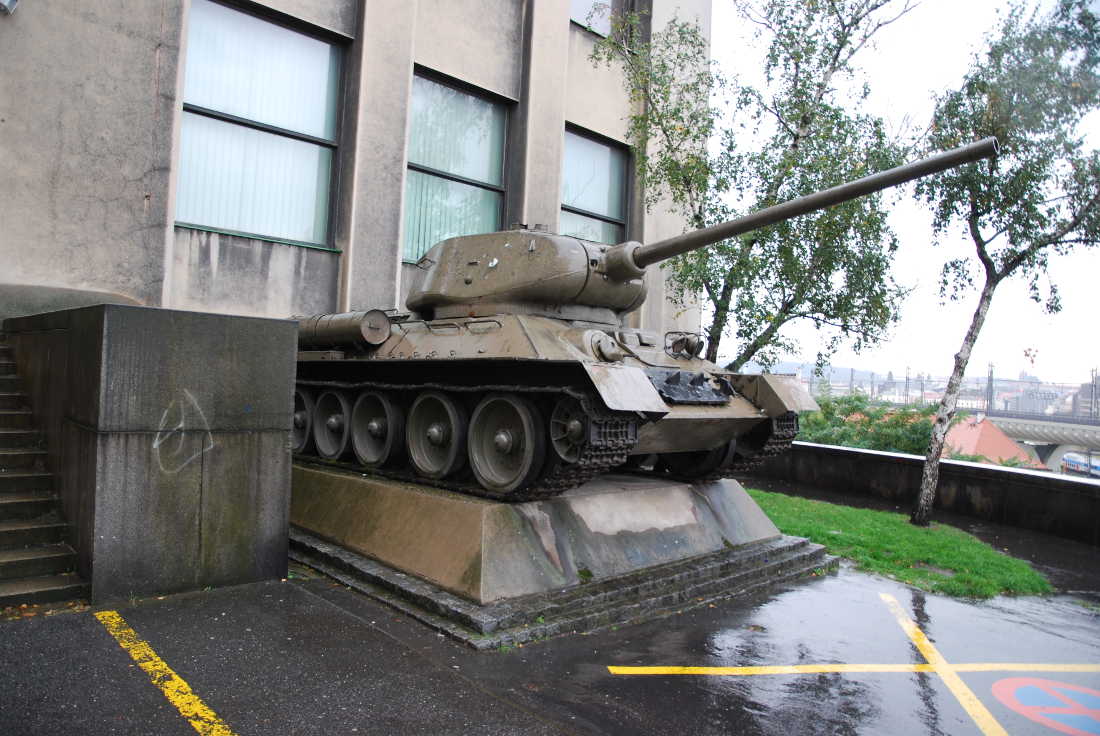Lead Photo: The T-34 handed in at the amnesty wasn’t as nice as the one outside the Prague Military Museum, but most collectors would take one in any condition (Photo of the author).
By: Peter Suciu
Gun amnesties aren’t just an American thing these days. Around the world, law enforcement holds these events to attempt to get “dangerous firearms” off the street. How much good it does is a matter of debate, however.
For one thing, nearly all guns are handed in “no questions asked,” and throughout the United States, it is common for law enforcement to require no identification. Some in this country may think asking for ID to vote is a problem , but have no problem allowing anyone to hand in a gun. The problem is that while some of the firearms handed in are sent to testing labs to see if the ballistic characteristics match a firearm used in a crime, it is now impossible to link anyone to said crime. There is the issue of chain of custody, which essentially makes the firearm inadmissible.
Then there is the fact that most of these buybacks actually pay very little money to those handing in the “unwanted guns.” It is true that the programs result in a lot of old junk, but over the years, there have been reports of some highly valuable antiques or otherwise collectible firearms appearing. It is little better than throwing rare comic books and baseball cards on a paper recycling pile!
The Tank and Artillery
It was reported earlier this month that in the Czech Republic, one individual “surrendered” a T-34 tank, a Czech-made variant of the iconic Soviet Red Army World War II model, and an SU-100 self-propelled artillery gun. The owner, a man from the Hradec Kralove region, handed in the tank after police announced the amnesty and joked that they’d accept weapons of any size – including a tank.
The local law enforcement likely didn’t expect to receive the tank or self-propelled gun, but the man offered the two vehicles when he couldn’t determine if they’d been properly deactivated.
“When we filmed a video on gun amnesty and said with exaggeration that [we will accept even a] tank, we didn’t expect it to inspire the people [to do so]. We present some of surrendered [items]: an SD-100 artillery and a T-34-85 tank,” the police said on its Facebook page according to a report from Tass, the Russian state media news outlet.
The police inspected the vehicles, instructed the owner on how to legally deactivate them, and then allowed him to keep them. It wasn’t reported how he came to own the two vehicles, but kudos to officials in the Czech Republic for their insightfulness on the issue. Too often in the United States the efforts to get guns off the streets go to the opposite extreme.
Rocket Launchers at Buybacks
There have been no tanks handed in at U.S. gun amnesties in the United States, but the mainstream media has reported of “rocket launchers” or anti-tank weapons that have been handed in several times in the past decade.
Back in December 2012, various mainstream news organizations reported that “rocket launchers” had been turned in as part of a Los Angeles Police Gun Buyback program. In the accompanying photos, police officers held up a pair of AT-4 rocket launchers, a Swedish designed weapon that fires an 84mm unguided projectile.
The story featured the hyperbole that is so common today, but a close look at the photo should have made it clear the rocket launchers were less dangerous than a club. The two were actually trainer models, which should have become apparent as the word “TRAINER” was emblazoned on each side. These were non-functioning models that were used to train soldiers.
Additionally, M72 LAWs (Light Anti-Tank Weapon) have also shown up at gun buybacks in Seattle and New Jersey, while another AT-4 showed up in December 2017 at a gun buyback in San Francisco. In all these cases, it shouldn’t have been news at all.

That is because the AT-4 – like the M72 LAW – is a single shot rocket launcher. Once fired, the tube is really as harmless as a long piece of PVC pipe! Used AT-4s – those that have been fired –regularly sell to collectors for $200 to $300. The seller, however, received only a $50 gift certificate.

Still, that is better than a lot of amnesty programs, which offer no money for the guns that are handed in.
It should also be noted that live AT-4 rocket launchers (or any similar anti-tank weapon) aren’t really available for civilian sale. Technically, it might fall into the “destructive device” category according to the ATF but Saab Bofors Dynamics, the makers of the AT-4, doesn’t have commercial sales so unless someone were to obtain one from the military – something that should never happen – it is simply impossible to buy one.
The same is true of the LAW. Once fired, it is just an empty tube not a weapon (unless you plan to use it as a club). Law enforcement officers should know that these weapons can’t be reused – but these items probably look good in the photos of gun buybacks as the unsuspecting public may assume wrongly that these are still capable of doing serious harm.
Peter Suciu is a freelance writer based in Michigan. Contact him at [email protected].

